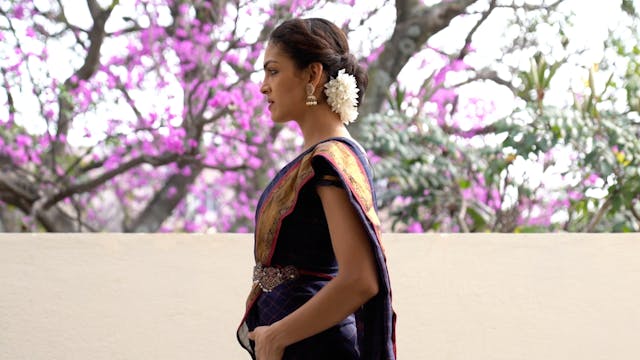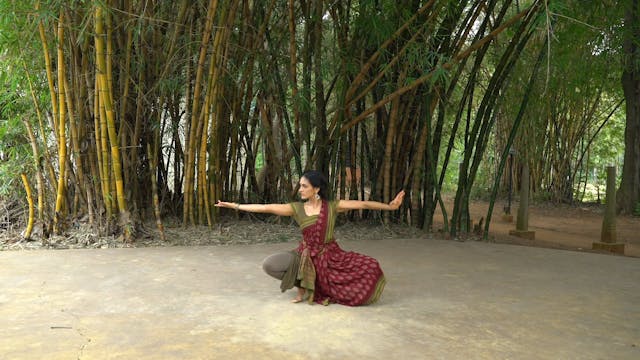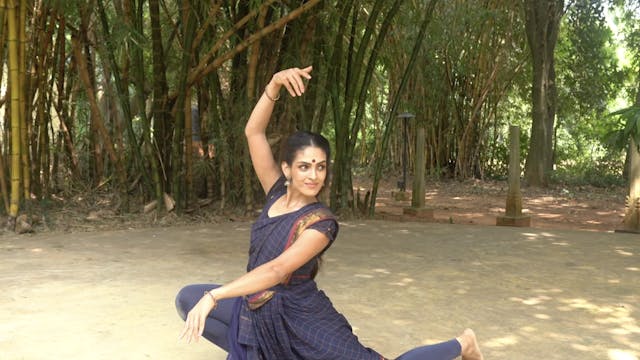Bāhu bheda Shloka
Playlist 35
•
34s
The arms considered one of the Upāngas, or minor limbs.
The movements are used primarily to communicate meaning in the context of gesture and also clear articulation in dance or nritta.
Please refer to the Shloka below for pronunciation. Please note that the separate movements of the head when put together in a Shloka form 'Sandhis', or compound words in the Sanskrit language. Words like 'ca', 'thatha', mean "and", "also". The separate words for each movement are also given below the shloka.
Tiryak ūrdvagatam caiva tathādhomukha eva ca
āviddasca apaviddasca mandalaswastikastatha
anicitaha kuncitascaiva prshtagasceti uditaha
bāhuprakāro dasadha nātyanritta prayoktribhihi
Tiryak
ūrdvagatam
adhomukham
āvidda
apavidda
mandala
swastika
anicitah
kuncitah
prshtagah
Up Next in Playlist 35
-
Udara bheda Shloka
The stomach is considered one of the Upāngas, or minor limbs.
The movements are used primarily to communicate meaning in the context of gesture.
Please refer to the Shloka below for pronunciation. Please note that the separate movements of the head when put together in a Shloka form 'Sandhis', ...
-
Mandi 1st speed
The Mandi Adavu gets it's name from the movement that involves the knee being placed on the ground alternately.
It is very important to do the exercises that strengthen the legs substantially and do all the exercises for Araimandi for a long period of time before embarking on this Adavu.
Boun...
-
Mandi Adavu Variations
The Mandi adavu is named such because there is a small jump on the balls of the feet after which the knee is placed on the ground.
Things to remember:
- stay lifted as much as possible without sitting on the heels
- keep pushing the thighs back and the heels forward to keep your muscles engaged...


